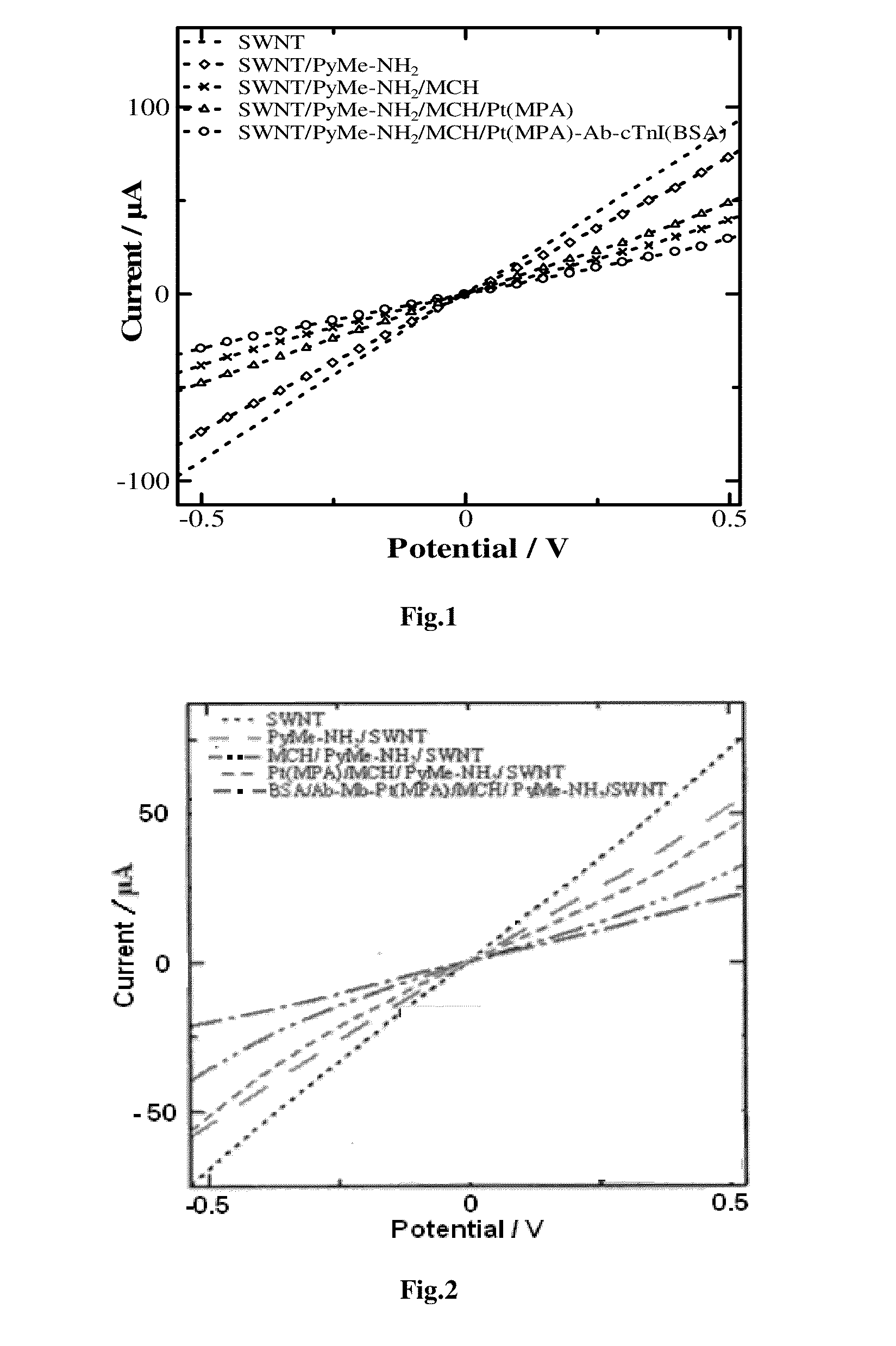Chemiresistive Biosensor for the Quantitative Detection of Human Cardiac Biomarker and a Process Thereof
a biosensor and quantitative detection technology, applied in the direction of fluid pressure measurement, liquid/fluent solid measurement, peptides, etc., can solve the problems of difficult automation, time-consuming, complex multi-stage process, etc., to improve electrical signal, increase detection efficiency, and increase the effect of protein antibody loading
- Summary
- Abstract
- Description
- Claims
- Application Information
AI Technical Summary
Benefits of technology
Problems solved by technology
Method used
Image
Examples
example 1
SWCNT-Device Fabrication
[0066]A SWCNT suspension was prepared by suspending 0.1 mg SWCNT in 10 mL N, N-dimethylformamide (0.01 mg mL-1) followed by 90 min sonication. The above solution was centrifuged at 12,000 rpm for 90 min and the supernatant was collected. 1.0 μL drop of the above prepared SWCNT solution was pipetted out in between the 3 μm apart gold electrodes and then aligned by ac dielectrophoresis by applying an AC frequency of 4 MHz with 1.5V peak-to-peak amplitude until a resistance of 1 M Ω was obtained. The aligned SWCNTs were then annealed in inert flow environment (95% N2 and 5% H2) for 1 h at 300° C. to remove residual solvents and improve the contact between SWCNTs and electrodes.
example 2
[0067]The SWCNT-device fabrication was carried out under identical experimental conditions, as described in example 1, except applying an AC frequency of 5 MHz with 2.0V peak-to-peak amplitude until a resistance of 0.8 M Ω was obtained.
example 3
[0068]The SWCNT-device fabrication was carried out under identical experimental conditions, as described in example 1, except applying an AC frequency of 10 MHz with 3.0V peak-to-peak amplitude until a resistance of 0.5 M Ω was obtained.
PUM
| Property | Measurement | Unit |
|---|---|---|
| size | aaaaa | aaaaa |
| size | aaaaa | aaaaa |
| concentration | aaaaa | aaaaa |
Abstract
Description
Claims
Application Information
 Login to View More
Login to View More - R&D
- Intellectual Property
- Life Sciences
- Materials
- Tech Scout
- Unparalleled Data Quality
- Higher Quality Content
- 60% Fewer Hallucinations
Browse by: Latest US Patents, China's latest patents, Technical Efficacy Thesaurus, Application Domain, Technology Topic, Popular Technical Reports.
© 2025 PatSnap. All rights reserved.Legal|Privacy policy|Modern Slavery Act Transparency Statement|Sitemap|About US| Contact US: help@patsnap.com



